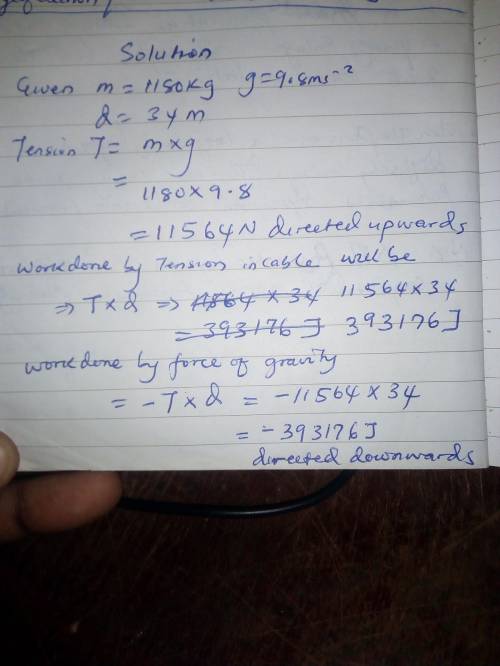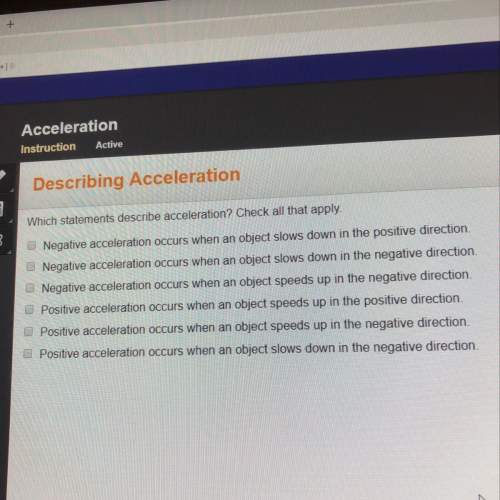
Physics, 08.07.2020 23:01 izzyisawesome5232
In a shipping yard, a crane operator attaches a cable to a 1,180 kg shipping container and then uses the crane to lift the container vertically at a constant velocity for a distance of 34 m. Determine the amount of work done (in J) by each of the following. a) the tension in the cable. b) the force of gravity.

Answers: 1
Another question on Physics

Physics, 21.06.2019 19:30
Agymnast dismounts off the uneven bars in a tuck position with a radius of 0.3m (assume she is a solid sphere) and an angular velocity of 2rev/s. during the dismount she stretches out into the straight position, with a length of 1.5m, (assume she is a uniform rod through the center) for her landing. the gymnast has a mass of 50kg. what is her angular velocity in the straight position?
Answers: 3

Physics, 21.06.2019 19:30
The lights used by mark watley (played by matt damon) during the film the martian seem to be metal halide lamps. metal halide lamps are filled with vaporized mercury and metal-halogen compounds. when an electric current is passed through the lamp, the tube begins to glow a bright white/blue color. if you were to pass this light through a prism to separate the individual light frequencies, you would see a rainbow just as you would if using natural sunlight because of the complexity of the metal halide gas and the vast amount of possible electron transitions. (the study of light in this way is known as spectroscopy and allows astronomers to know exactly what atoms compose distant stars, simply by looking at the light they emit. the spectral lines an atom produces uniquely identifies that atom just like a fingerprint uniquely identifies a person. the momentum equation and energy equation that we have used above can be combined to give the following equation: c = e p where again p is the phonon momentum, e is the photon energy and c is the speed of light. when you divide the photon energy found in #6 by the photon momentum found in #4, do you get the speed of light? (if not, check your work for questions #4 through #6). yes no
Answers: 2

Physics, 21.06.2019 22:50
A23 kg log of wood begins from rest, 300 m up a sluice (a water track used to transport logs, think of it as an inclined plane with negligible friction) inclined at 20° to the horizontal. after it reaches the flat waterway at the bottom it collides elastically with a 100 kg block of wood initially at rest near the base of the incline. (a) how long does it take the 23 kg log to travel down the incline? (b) what is the speed of the 23 kg log at the bottom of the incline? (c) what are the velocities of both blocks of wood after the collision? (d) what is the total kinetic energy before the collision? (e) what is the kinetic energy of the 23 kg log after the collision? (f) what is the kinetic energy of the 100 kg block of wood after the collision? (g) what is the total kinetic energy after the collision? (h) compare the total initial and total final kinetic energies. is this consistent with what you would expect for elastic collisions? explain!
Answers: 1

Physics, 21.06.2019 23:40
Avalue that describes how heavy an object is and is related to the force of gravity is
Answers: 1
You know the right answer?
In a shipping yard, a crane operator attaches a cable to a 1,180 kg shipping container and then uses...
Questions














Mathematics, 02.03.2020 17:21










